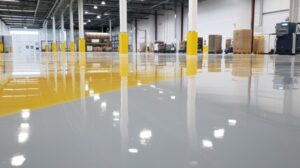Boat lifts allow you to safely and easily store your watercraft at home. It’s an excellent alternative to storing your boat in a marina and offers a variety of benefits.
Dock Lifts are preferred over dock levelers when facilities require height adjustment capabilities for a range of truck bed heights and material handling applications beyond traditional loading dock configurations. They are also more versatile, safer and less expensive than recessed truck wells. Find Out More by reading the article below.
Pit-Mount Lifts

A dock lift is used to lift and lower materials for loading trucks or carts. They are designed to improve floor efficiency and handling safety by allowing the operator to raise or lower materials with constant hydraulic pressure. They are ideal for automotive workshops in Gujarat, warehouses in Maharashtra, and production floors in Tamil Nadu. Each unit is equipped with a hydraulic system, operational manual and tested load capacity certificate.
Typically, pit dock levelers are installed in a concrete pit on the building’s warehouse floor. The pit is usually bordered by structural steel angles embedded in the concrete. The deck assembly of the dock leveler sits in the pit and is anchored at one end, while a lip attached to the building’s exterior rests on the truck bed at the other end.
There are two basic models of pit dock lifts: the fixed-location version and the portable version. Both offer the same lifting height and operation, but the portable model has wheels on the bottom of the frame, which makes it easy to roll into new locations for use as needed. Both models have a tethered pendant control or pedestal control center to give the operators access to the controls from either location.
Depending on the application, the pit dock leveler can be equipped with additional components. These include a counterweight buffer to prevent the cabin from falling into the pit when it is raised or lowered, and an oil cup to contain any lubricant on the rails. A shim is placed underneath the dock leveler to assist in leveling it when necessary, and a toe guard is affixed flush to the deck assembly to protect workers from being caught under the unit.
A vertical platform lift is a cost-effective option for applications that require accessibility to a vehicle or interior of a building. It can be installed on grade or within a pit, and it can operate either manually or mechanically. Garaventa offers two models of this lift: the enclosure model, which provides access for disabled people, and the non-enclosure model that is suitable for configurations with limited travel and 2 stops. Both have simple constant-pressure operation and swing door access.
Surface Lifts
In mountainous areas, surface lifts or platter lifts are used to transport skiers on small and smooth terrains and beginner slopes. They were developed as the first type of ski lift before aerial lifts came about and are still the cheapest option for accessing ski slopes. People grab a pole that has a grip attached to the transportation rope and the platter pulls them up. These types of lifts are not as fast and require more maintenance than aerial lifts, but they are easy to install in small spaces and have less impact on the environment.
A boom lift is a piece of industrial equipment that helps workers safely reach elevated places on work sites. The equipment can be rented out to assist with construction and maintenance jobs that are too difficult or dangerous for workers to complete on their own at high elevations. Some of the tasks that can be performed by boom lifts include electrical and construction work, fruit or crop harvesting, painting and window washing.
Unlike other aerial lifts, boom lifts can be used in indoor environments due to their light frames. However, the heights that they can reach are specified as a range rather than a specific maximum value, so users should always be aware of the dimensions of their workspace when selecting a lift.
When using a boom lift, workers should follow the manufacturer’s instructions for safety and operation. Some important tips include securing loose items before the lift moves, clearing out of the way if you’re being dropped off and never leaving the platform. It is also important to wear a helmet, use the handrails and keep an eye out for other people using the lift.
A variety of different types of lifts are available to suit a wide array of applications, from small-scale projects to large-scale construction and maintenance. For instance, micro MEWPs are often utilized in hospitals for ongoing maintenance and renovations without restricting the daily operating functions of the building or causing unnecessary structural damage. These types of lifts are able to be operated quietly and in close proximity to patients, as well as operate on rough terrain where traditional MEWPs would have trouble.
Platform Lifts
A platform lift is a great solution for homes with more than one flight of stairs that aren’t easily accessible by wheelchair users. Also called porch lifts, they’re durable and easy to operate. They’re often used in conjunction with other accessibility solutions, such as a ramp or elevator, to make it easier for wheelchair users to move around their homes and outside spaces like patios.
These types of lifts are typically permitted in alterations where topography or other exterior site constraints render a ramp infeasible, and in new construction. They’re also sometimes used to coordinate interior floor levels when building a new structure between existing buildings, where coordinating floor heights requires extensive renovations.
Dock lifts can increase the speed and efficiency of loading and unloading operations, allowing for greater capacity than using a tailgate equipped truck. They can also help reduce wear and tear on trucks, saving truck operating costs that are passed on to the customer. They’re available in a variety of sizes and capacities, making them versatile enough to work with almost any type of vehicle.
Copperloy’s range of dock lifts includes fixed and portable models. They can be installed in the pit or on the ground, and are powered by single-phase or three-phase power. They’re available in a range of standard capacities to accommodate everything from hand carts to power pallet jacks and lift trucks, with higher capacity options also available.
In addition to being convenient, vertical platform lifts allow individuals with limited mobility to enjoy the outdoors, as well as different level parts of their homes. This allows them to travel freely and without the need to constantly depend on a caregiver or family members. They’re also a cost-effective way to improve home accessibility and increase independence for people who use wheelchairs.
Whether you want to install a vertical or inclined porch lift in your home, it’s important that you choose the right model to meet your needs. Our team can advise you on the best option, ensuring you get a safe and durable lift that’s ideally suited to your needs and budget.
Beamless Lifts
Unlike traditional lifts with upper lifting beams, beamless lifts leave your vessel’s appealing contours on full display. They are an attractive alternative to the unsightly metal constructions that spoil many a waterfront view. Beamless boat lifts also make getting on and off your boat much easier because there are no beams to duck under or step over when accessing your vessel.
These lifts mount to dock pilings or the face of a seawall and use angled rails to raise boats sideways. They are the go-to solution when space is tight but you need full lifting power for your vessel.
You can choose a standard platform lift or a custom designed system to meet your unique needs. Stainless steel cables and cable winders, galvanized cradles, and high-capacity motors deliver maximum strength with a sleek design that complements your dock construction.
Beamless lifts also allow you to build your lift lower into the water, so it is closer to the shoreline. This allows you to comply with riparian setback requirements and makes it easier to get on and off your vessel.
A marine railway is a great choice for beach access locations or gradual slope conditions that don’t allow for dock pilings and seawalls. This unique type of lift pulls boats or seaplanes onto land or into a boat house or garage.
Having a dock lift as part of your waterfront construction can save you time and effort while protecting your investment. By keeping your boat above water, you can protect it from biological waste (slime, algae, barnacles) and wear and tear caused by tidal currents, rising and falling water levels, and large wakes and waves.
It’s important to work with an experienced and knowledgeable lift installer (like Hurricane) to ensure proper installation and code compliance for your waterfront project. We can also provide recommendations based on your specific dock design, lift style, waterway location, and water depth to ensure you choose the right lift for your boat and your situation. Contact us today to discuss your options and schedule a free consultation. We are committed to providing industry-leading performance and top-tier customer service!


